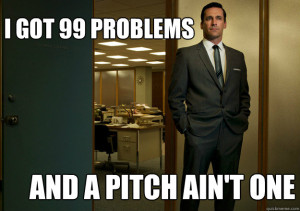This is the post for the Monday, November 2, 2015 class meeting.
 Important Dates
Important Dates
Today is the end of the grace period for Project 3. Be sure you have turned it in by 11:59 PM tonight. All other upcoming dates are all on the Project 4 Schedule page.
Additional Tools
Note the table of software programs in the textbook on page 78. Here are some additional tools you can use as you work on your projects:
- Comic Strips
Bitstrips, ComicMaster, MakeBeliefsComix, Pixton, PowToon, StripGenerator, ToonDoo, Voki, WittyComics - Timelines
Dipity, OurStory, Timeglider, TimeRime, Timetoast - Others
BeFunky, Bitmoji
If you find anything problematic (e.g., racist, stereotypes) as you work with these tools, let me know and I’ll take that tool off the list.
Deciding What Tools to Use
Test the tools (slideshow with examples) that you are considering for your project to ensure that they do what you need them to.
- Will the tool support your rhetorical situation?
- Does the tool give you control of pertinent design choices?
- Does the tool support the modes you want to use as you retell the story?
- Are there useful affordances to the tool?
- Are there problematic constraints?
Before you make your final decision on the tool that you want to use, you need to check some specific constraints that have been a problem in the past:
- Are there any time limits to how long you can use it?
- Are there any other restrictions on how much you can use it?
- How does it export your work? (and yes, I have the student’s permission to share this work):
Key Points from Chapter 5
As you read and use information from Chapter 5 of Writer/Designer, pay particular attention to these details:
-
Table of Technology Choices on page 78.
-
The book explains that a multimodal project doesn’t have to be digital; however, what you make for Project 4 does have to be digital.
-
As you firm up your decision on what tool(s) to use, keep in mind the same questions you used to evaluate an interface in Project 3. There’s also a case study that starts on page 79 and a technology review on page 81.
-
Pay attention to the tips on organizing and naming your files on pages 88–89.
-
Consider making a short style guide for your work to ensure consistency, following the suggestions on page 89.
Pitches (In-Class Writing)
Complete the "Project 4 Pitch" quiz in Canvas to tell me about your current plans for Project 4. Please be specific as you answer each of the questions. I will use the information to ensure that you have chosen a project that will fulfill the assignment.
If your plans change in the future, you will need to talk to me to get approval for the new direction you are taking.
Homework
For today, please do the following:
- If you didn’t complete your "Project 4 Pitch" quiz in Canvas, please use the grace period to finish by 5:30 PM Tuesday (11/3).
For Wednesday, do the following before class:
- Read Chapter 6 of Writer/Designer. We’ll talk about storyboards and mockups in class.
For Friday, do the following before class:
- Bring whatever you need to work on your project in class. Friday will be an in-class workday.
- Anyone signed up for the English Career Connection will be allowed to leave early, after I check in with you on your project.
